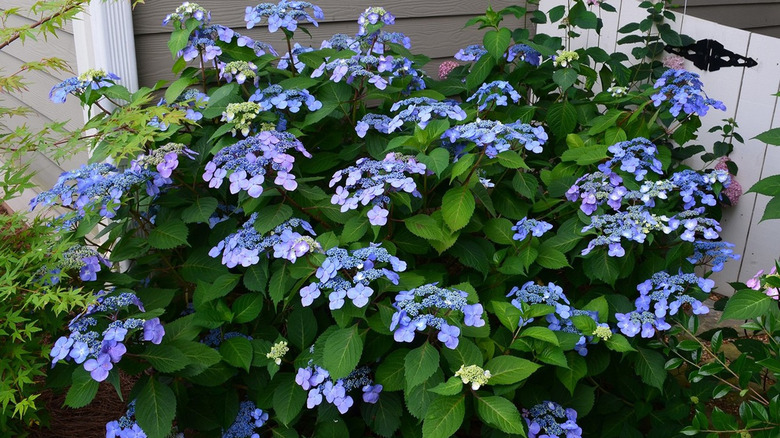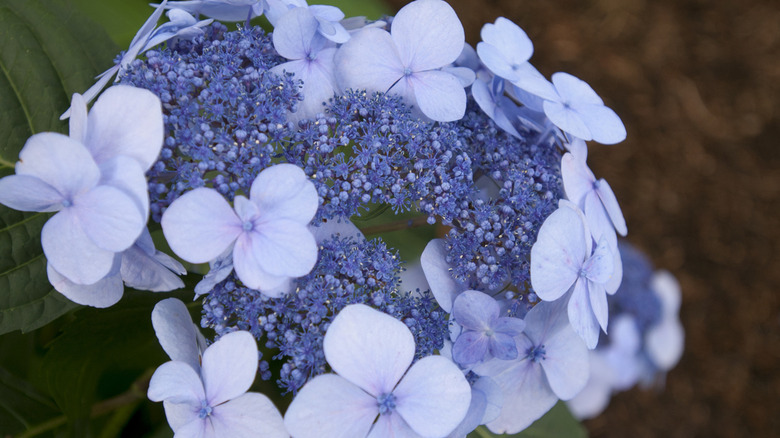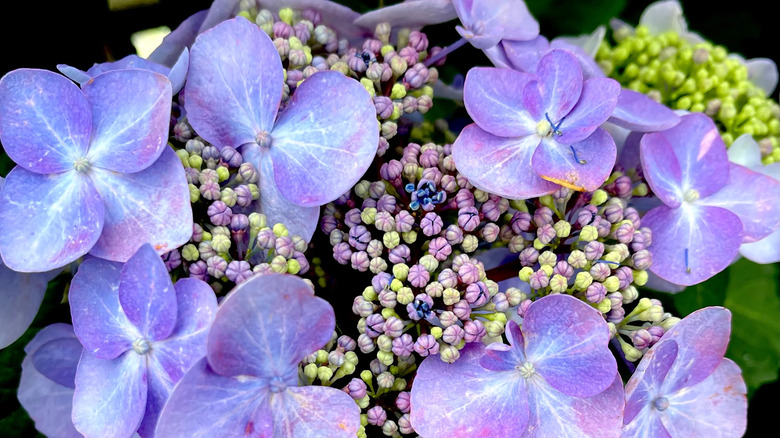What Makes The Twist-N-Shout Hydrangea So Special (& The Best Growing Conditions)
Hydrangeas are a primary plant chosen for our gardens because of their easy care needs, stunning florals, and long-living reputation as they come back year after year. There are more than 70 different types of hydrangeas and six commonly grown varieties across the U.S. One of those is the H. Macrophylla family, which features the popular Endless Summer Twist-n-Shout hydrangea. If captivating color and bloom quality are must-haves in your garden, this is definitely one to check out.
Among the attributes that set the Twist-n-Shout hydrangea apart from others is that it is low maintenance and easy to grow. Whether you are just getting into gardening or have been at it for years, this hydrangea will thrive, no matter if it is grown in containers or directly in your flowerbeds. While this variety is most commonly grown in the South, it can be successfully cultivated across the U.S. by tweaking its care needs according to your location's climate.
What sets the Twist-n-shout hydrangea apart?
The Twist-n-Shout hydrangea has many loved qualities, but its reblooming is one of the most adored. Many hydrangeas will bloom only one time a season, but the Twist-n-Shout flowers twice, once in the spring and again towards fall. Its coloring is another characteristic that draws us in with this lacecap hydrangea boasting pink or blue flowers with large green leaves and reddish stems. The color your perennial takes will depend on the pH of the soil. If pink flowers are desired, you should limit the aluminum in the ground with an alkaline soil mix to reach a pH of 6. For blue, acidic soil with a lower pH of 5 should be the goal.
As fall approaches and leaves on the surrounding trees begin to change color, you will find your Twist-n-Shout's foliage doing the same. The whole spring-to-fall experience with these shrubs is what truly shines through. They will reach a mature size of 3 to 5 feet tall and 3 to 4 feet wide and are flexible in how they can be grown. With the proper training and guidance, this hydrangea can climb, be contained in smaller planters, used as boarders, and just about anything else your heart desires. While these plants are beautiful and make a wonderful addition to our outdoor spaces, keep in mind that PetMD notes all hydrangeas carry amygdalin, a very toxic chemical to pets and humans if ingested.
Growing conditions and care
One of the many reasons Twist-n-Shout hydrangeas are often sought after is because they have relatively easy care needs and can grow in pretty relaxed conditions. This hydrangea needs full to partial sunlight, with exactly how much shade depending on the temperature. For climates that get exceptionally hot in the peak of summer, the perennial will need more shade than those in locations that remain cooler. The Twist-n-Shout also needs loamy and aerated soil as they love frequent waterings and moist conditions, but if it stays too wet for too long, you risk root rot and other disease. Deep waterings once a week are ideal, but again, the location of your plant will be cause for adjustments. For consistently higher temperatures and container-planed hydrangeas, waterings will likely need to be more frequent.
The Twist-n-Shout won't often require pruning, if any. But, some light pruning may still benefit the plant if performed on older flowers during the blooming season. Since this hydrangea variety flowers more than once a year, it's favorable to be fertilized twice – in spring and again as fall commences. Either chemical or organic fertilizers will do the trick; however, be careful not to over-fertilize and burn the plant. Mulch will also be immensely helpful, aiding in water retention and protecting the roots from extreme heat and cold weather when winter approaches. If given the proper tender, love, and care, your Twist-n-Shout hydrangeas could see up to 20 years of life in your garden.


